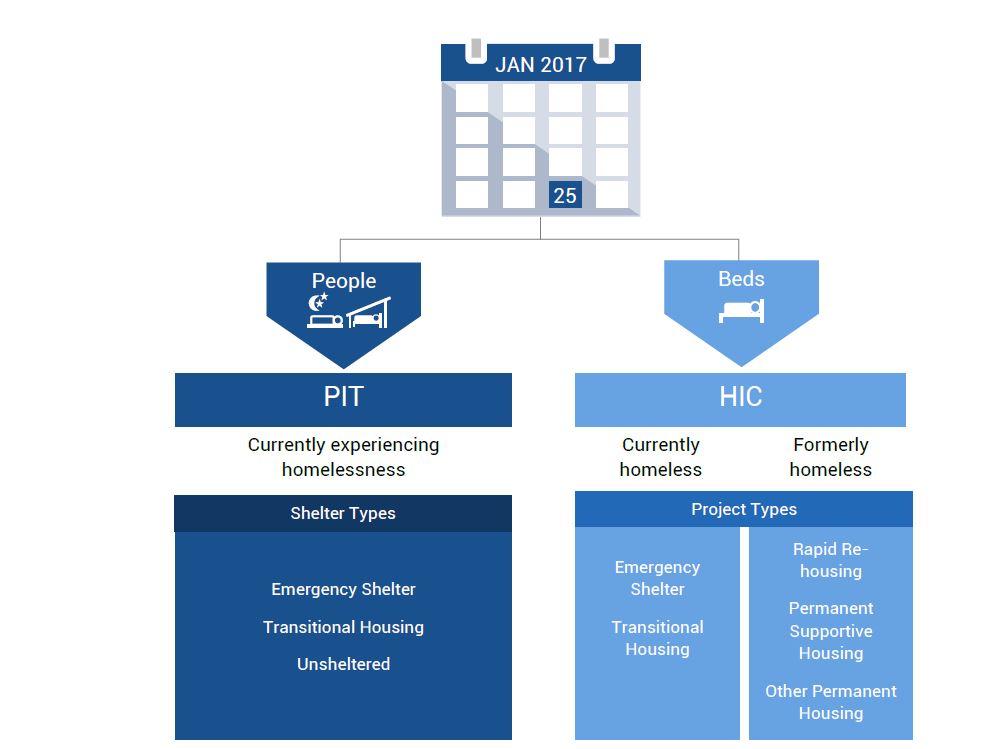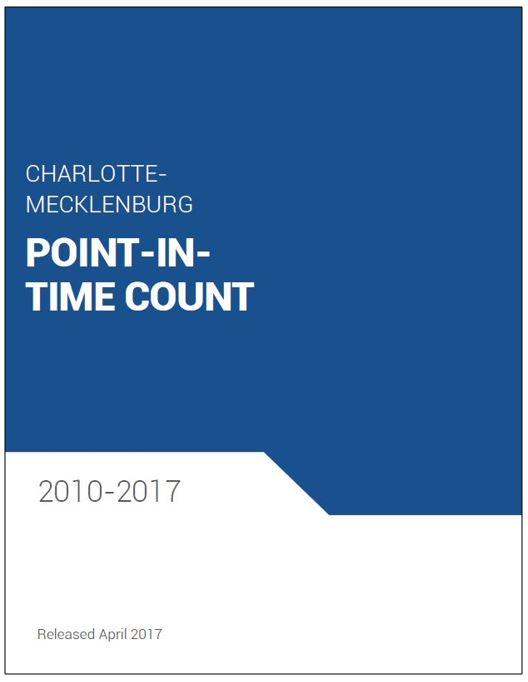Homelessness counts fall, even as Mecklenburg population rises

[highlightrule]The annual Point-in-Time Count finds that since 2010, the number of permanent housing beds has increased and overall homelessness has decreased.[/highlightrule]
Click image to download PDF version of the report.
Even while Mecklenburg County’s population has grown, a yearly count since 2010 has found declining numbers of people who were experiencing homelessness during a one-night count each January.
The yearly count is an effort to get a snapshot of the number of people experiencing sheltered and unsheltered homelessness on one night. This past January’s count identified 1,476 people experiencing homelessness on the night of the count.
Overall, homelessness decreased by 26 percent between 2010 and 2017 and 12 percent since 2016, despite the population of Mecklenburg County growing an estimated 17 percent since 2010. During this same time period, the number of permanent housing beds (permanent supportive housing, rapid re-housing, and other permanent housing) increased.
The findings are detailed in the Charlotte-Mecklenburg Point-in-Time Count report, 2010-2017. The report is funded by Mecklenburg County Community Support Services as part of a series of reports on housing instability and homelessness in Mecklenburg County. The Point-in-Time Count is a one-night estimate of people living in emergency shelters and transitional housing, as well as in unsheltered locations such as camps, street benches and cars.
For the first time, the PIT Count report also includes findings from the Housing Inventory Count (HIC) of beds dedicated to people experiencing homelessness. The HIC Count provides a snapshot of the community’s capacity to serve people experiencing homelessness.
When the PIT and HIC are combined, it allows for a deeper understanding of the need (people experiencing homelessness) and the capacity to meet that need (number of beds for people experiencing homelessness).

Some highlights from the report:
- Homelessness among veterans, families and the chronically homeless decreased since 2016.
- Unsheltered homelessness continues to rise. From 2016 to 2017 unsheltered homelessness increased 15 percent (28 people).
- Most people experiencing unsheltered homelessness were males (85 percent), over the age of 25 (91 percent), with a source of income (70 percent), had been homeless 12 months or longer (62 percent), and had lived in Charlotte-Mecklenburg for the past two years or longer (68 percent).
The PIT Count is intended to serve as a snapshot of homelessness on one night, and as such has limitations. Because it is a snapshot, the number of people experiencing homelessness is an undercount, because it does not include those who are homeless at different points throughout the year. It also does not include people who may be experiencing housing instability, such as living doubled-up with family and friends or in hotels and motels.
The report was prepared by Ashley Williams Clark and Justin T. Lane of the UNC Charlotte Urban Institute for the Housing Advisory Board of Charlotte-Mecklenburg, a community-based board appointed to put into action the Charlotte-Mecklenburg Ten Year Plan to End and Prevent Homelessness. Funding for the report was provided by Mecklenburg County Community Support Services.
